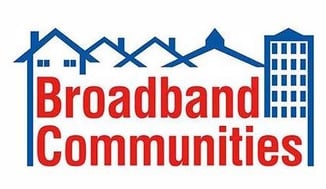Think Fixed Wireless Is Cheaper? Think Again

 This article was originally published in Broadband Communities.
This article was originally published in Broadband Communities.
Service providers bidding on the FCC’s RDOF auction should consider the long-term cost variables of using fixed wireless or FTTH to extend broadband to rural areas.
As the U.S. telecom industry prepares bids for the $16 billion first phase of the Rural Digital Opportunity Fund (RDOF) auction, there is a lot of excitement over the greater flexibility in technologies the FCC allows. As the program pushes to get an exponential lift in broadband speeds to the most underserved communities, fixed wireless technologies are expected to feature prominently in situations where fiber to the home (FTTH) does not seem practical.
Indeed, the conventional wisdom is that fixed wireless will be the most practical, fastest, and most cost-effective solution to serve many of these remote locations. There’s no doubt that the deployment speed of fixed wireless versus fiber in conjunction with the 100 Mbps or higher speeds that fixed wireless can now deliver make a very compelling value proposition for remote communities, which undoubtedly will be capitalized on in the RDOF bids.
But network planning and design rarely lend themselves to blanket statements. Planning a network to find the most efficient design becomes critical. Given the complexity of managing across so many variables and the historical siloes in which the fiber and the wireless teams sit, service providers frequently are forced to make investment decisions with less than complete data and analytical insights.
The planning process for both fiber and fixed wireless must accommodate the demographics, the housing density, the location options for connecting to the feeder network, and the capacity constraints (or lack thereof) of that network. Wireless planning also needs to accommodate topography, such as hills and trees.
Economic analysis comparison – fixed wireless and GPON hybrid
Comparing Fiber, Wireless Options
Counterintuitively, there are use cases in targeted RDOF areas where FTTH technologies, such as GPON, are the less expensive broadband architectures. In high-density areas, GPON tends to be the most attractive option over fixed wireless, as more wireless antennas must be deployed there. Deploying antennas on telephone poles requires more time to implement because more governmental approvals are needed. If a tower needs to go higher to serve more customers, the level of bureaucracy goes higher, too. The fiber penetration looks more like fiber to the curb (FTTC), lowering the savings of fixed wireless.
Finally, even when providers think they have modeled the geography efficiently, determining where to implement fixed wireless and where to implement FTTH, a new micro-optimization within the serving area for each tower needs to be calculated. The new analysis needs to include the fact that the location of the tower is now fiber-fed and can produce another cluster of customers who could be better and more cost-effectively served with FTTH.
Let us take a closer look. In this example, there are a few high-density neighborhoods in an otherwise rural region. Considering the topography, including hills and trees, and the density of the neighborhoods, the analysis shows the communities and the service provider are better served with a combination of fixed wireless and GPON.

Customer ROI comparison – hybrid (wireless and GPON) solution. Average cost per household is what the service provider will spend per household for the network build.
Understanding the cost per household and cost for the first household for fixed wireless and FTTH in a target RDOF community can make a material difference to the prospective service provider’s financials. This ability to develop and compare options depends on enabling the wireless propagation planning to interplay with the fiber planning process.
Understanding the Variables
In the RDOF bidding process, lack of insight into all the variables can result in significant amounts of money spent and not recovered. Even though a lower-cost design may look viable, cost should not be the only consideration.
Applicants must figure in the 10-year RDOF funding and how it affects the payback period. A low-cost fixed wireless design may offer a shorter payback, but it may be technically out of date and put a provider at a competitive disadvantage by the time it deploys. A costlier plan requires a longer payback but also sets providers up for long-term competitive advantage. Something else to consider: With a 30-year write-off, the lower value design will give a much smaller contribution to cash flow over 30 years than the higher-cost design. So cost is not the end-all of the decision processes but one component of a financial model.
Service providers should instead assure that they have the tools and processes at their disposal to evaluate options for each census block. A growing subscriber base and millions in profit are at stake.
Sally Hudson serves as chief revenue officer at VCTI, a provider of software products and technical expertise for communications services providers and the vendors whose equipment is embedded in their networks.



